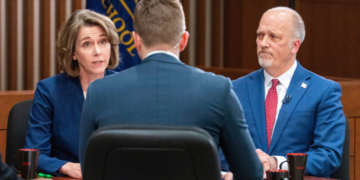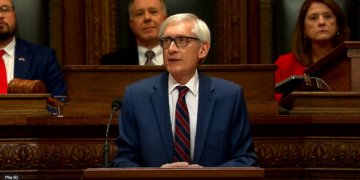Wisconsin Republican legislators have introduced a bill aiming to ensure that a larger share of school funding is directed toward classrooms rather than administrative expenses. The measure, backed by Republican Representatives Franklin, Vos, Steffen, Behnke, Wichgers, and Allen, along with Senator Tomczyk, would require school boards to allocate at least 70% of their operating expenditures toward direct classroom costs. Additionally, the bill seeks to limit annual salary increases for school administrators, tying them to the average percentage increase given to teachers in the district.
Since 2000, the number of administrative staff in public schools has surged by nearly 95%, as shown in the chart. Meanwhile, student enrollment has only increased by about 5% during the same period, highlighting a wide disparity in growth rates. This trend suggests that administrative costs have risen significantly, potentially diverting resources away from classrooms. Teachers, on the other hand, have seen a more modest 39% increase, while the number of principals and assistant principals grew by 10%. These figures underscore concerns about administrative bloat in public education systems and lend weight to legislative efforts aimed at reallocating funds toward direct classroom expenditures.
Under the proposed law, direct classroom expenditures would include teacher and teacher aide salaries and benefits, instructional supplies, tuition, athletic programs, and co-curricular activities. If a school district fails to meet the 70% threshold, it must incrementally increase classroom spending by at least 2% each year until compliance is reached. The bill also includes a financial penalty, allowing the Department of Public Instruction (DPI) to reduce state aid to non-compliant districts by the shortfall amount and prohibiting them from raising local property taxes to make up the difference.
Perhaps the most controversial element of the bill is the restriction on administrator pay increases. School districts would be prohibited from granting salary increases to administrators—including superintendents, business managers, and principals—beyond the average percentage increase given to teachers. This provision would apply to new, renewed, or modified contracts once the bill becomes law.
Supporters argue that the bill prioritizes students and teachers by ensuring funds are directed where they are needed most. They point to rising administrative costs in many districts as a barrier to effective classroom spending. Opponents are likely to argue that rigid spending requirements could create unintended financial strain on schools with unique needs and that limiting administrator pay may make it harder to attract and retain experienced leaders.





























